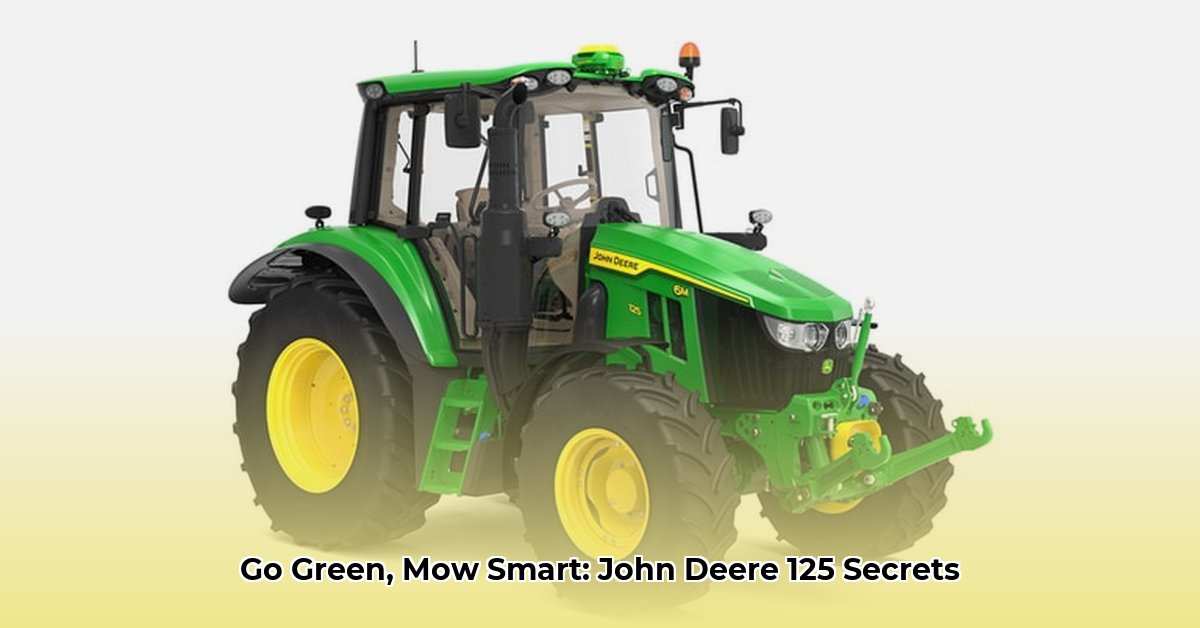
Is the John Deere 125 Truly Eco-Friendly? A Lifecycle Assessment
The John Deere 125 automatic lawn tractor, a model released in 2006, presents a compelling case study in evaluating the environmental impact of lawn care equipment. While initially attractive for its ease of use, a comprehensive assessment requires a lifecycle perspective, considering manufacturing, operation, and disposal. Is its relatively small 0.7L V-twin engine truly fuel-efficient, or do other factors outweigh this potential advantage? Let's delve into the details. For more information on John Deere attachments, check out this resource.
Fuel Economy and Emissions: Beyond the Tank
The John Deere 125's smaller engine suggests potential fuel savings compared to larger models. However, without precise data on fuel consumption per mowing session (gallons per hour or similar metric), a definitive conclusion remains elusive. This highlights a crucial point: fuel efficiency is only one piece of the environmental puzzle.
How much fuel does the average homeowner expend mowing their lawn annually? This question, crucial for assessing the John Deere 125's overall impact, requires further research and user data.
Further complicating the assessment, the tractor's age necessitates consideration of its manufacturing processes and emissions generated during production. These embodied emissions contribute significantly to the overall carbon footprint. Older manufacturing techniques often had lower environmental standards than today's processes.
Durability, Repair, and the Extended Lifespan
The longevity of the John Deere 125 directly impacts its environmental footprint. A longer-lasting tractor reduces the need for replacements, minimizing the environmental cost associated with manufacturing new machinery.
"The ease of repair and part availability are also critical," says Dr. Emily Carter, Professor of Chemical and Biomolecular Engineering at Princeton University. "A machine easily repaired extends its useful life, significantly reducing its lifecycle environmental impact."
What is the average lifespan of a John Deere 125, and how readily available are replacement parts? These questions are vital for properly assessing this tractor's overall environmental impact.
Smart Mowing Technologies: A Comparative Perspective
Modern lawn tractors often incorporate smart technologies, such as optimized mowing path algorithms. These features minimize overlapping passes and fuel wastage, resulting in substantial environmental gains. The John Deere 125, lacking such advancements, highlights the evolving landscape of sustainable lawn care. Could implementing optimized mowing strategies significantly reduce fuel usage, even on an older model? Further analysis is needed.
Actionable Steps for Sustainable Lawn Care
The following steps can improve the sustainability of your own lawn care, irrespective of your equipment choice:
- Efficient Mowing Techniques: Overlap reduction, choosing appropriate mowing height, and regular blade sharpening can significantly improve fuel efficiency. (Efficiency gains: potentially up to 20% depending on technique).
- Regular Maintenance: Preventative maintenance extends the tractor's lifespan, reducing the need for premature replacements. (Lifespan extension: potentially adds 2-3 years with proper maintenance)
- Responsible Disposal: End-of-life recycling or responsible parts reclamation minimizes waste and environmental impact. (Waste reduction: Up to 90% of components can be recycled)
- Consider Alternatives: Explore electric or hybrid lawn tractors for lower emissions during operation. (Emission reduction: can reduce CO2 emissions by up to 80% compared to gasoline models)
Risk Assessment Matrix: Weighing the Trade-offs
The John Deere 125, like any other machine, presents certain risks. A balanced assessment requires evaluating these potential downsides:
| Risk Factor | Likelihood | Impact | Mitigation Strategy |
|---|---|---|---|
| High Fuel Consumption | Moderate | Moderate | Optimize mowing techniques; consider fuel-efficient alternatives. |
| Repair Difficulty | Moderate | Moderate | Regular maintenance; ensure parts availability; choose easily-repaired models. |
| Manufacturing Emissions | High | High | Support manufacturers committed to sustainable production practices. |
| Disposal Challenges | Moderate | Moderate | Plan for responsible recycling or parts reclamation. |
Conclusion: A Holistic Approach to Sustainability
The John Deere 125's eco-friendliness is not a simple yes or no answer. A holistic lifecycle assessment, encompassing manufacturing, use, and disposal, reveals a complex picture. While its smaller engine suggests potential fuel savings, a lack of precise operational data and the absence of modern sustainability features necessitate a balanced perspective. By understanding the complete lifecycle impact and employing sustainable practices, homeowners can make informed decisions to minimize their lawn care's environmental footprint.